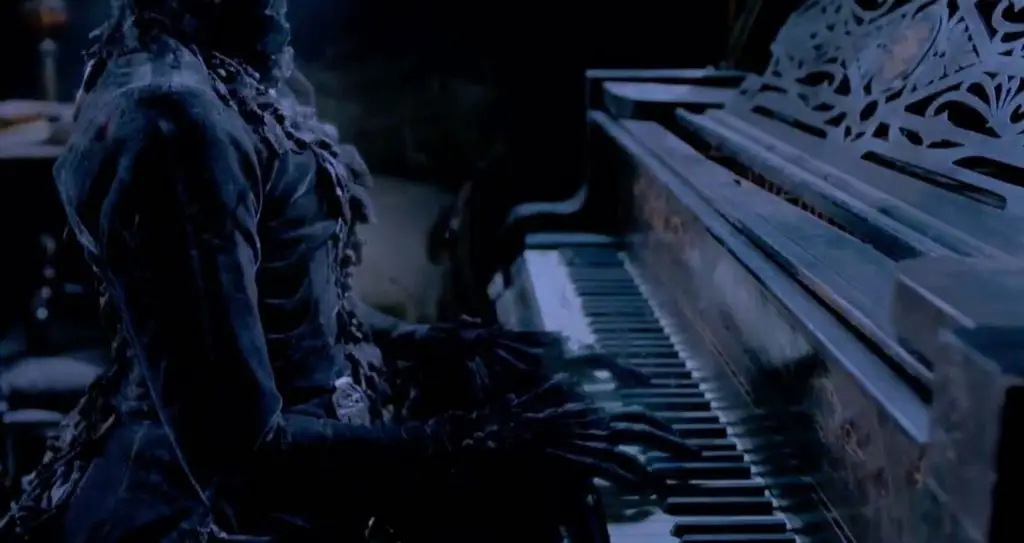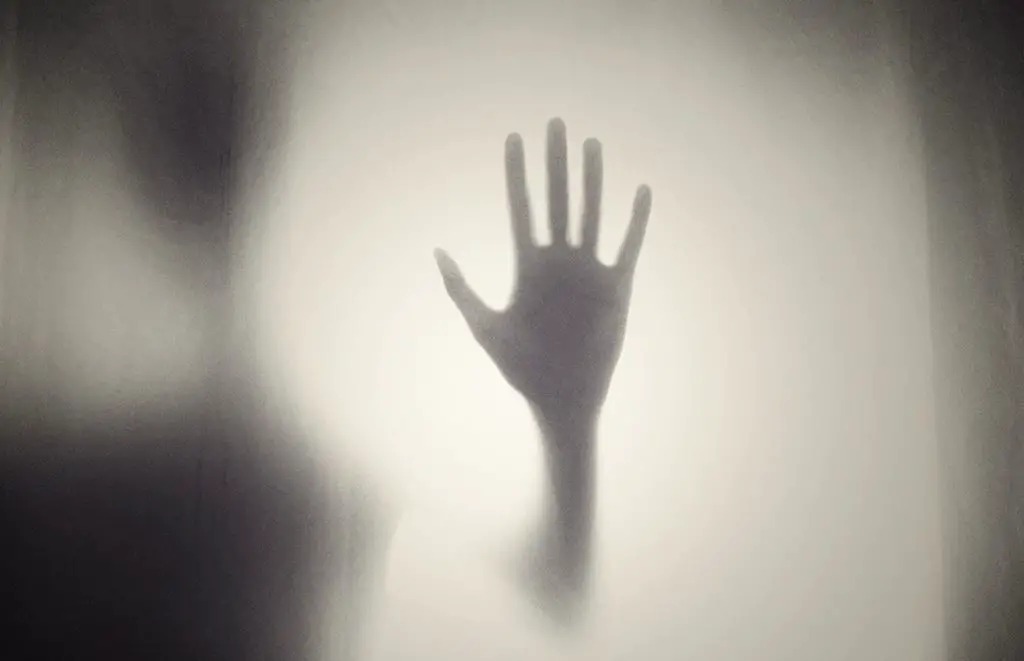Was it the Movie or the Music?
Unforgettable horror movie music; it makes you jump out of your seat, shout uncontrollably, or squeeze all the life, blood, and feeling out of the person’s hand next to you. Above all, it’s what good horror films strive to impart. To shroud us in total fear. But at the moment of the jumpscare, something else is at play—something that lies just beneath the surface of the visuals: the musical score. Here is a short list; the top 10 most memorable horror movie musical scores. Truly imagine the following films without music, and you’d watch a horror film far less scary.
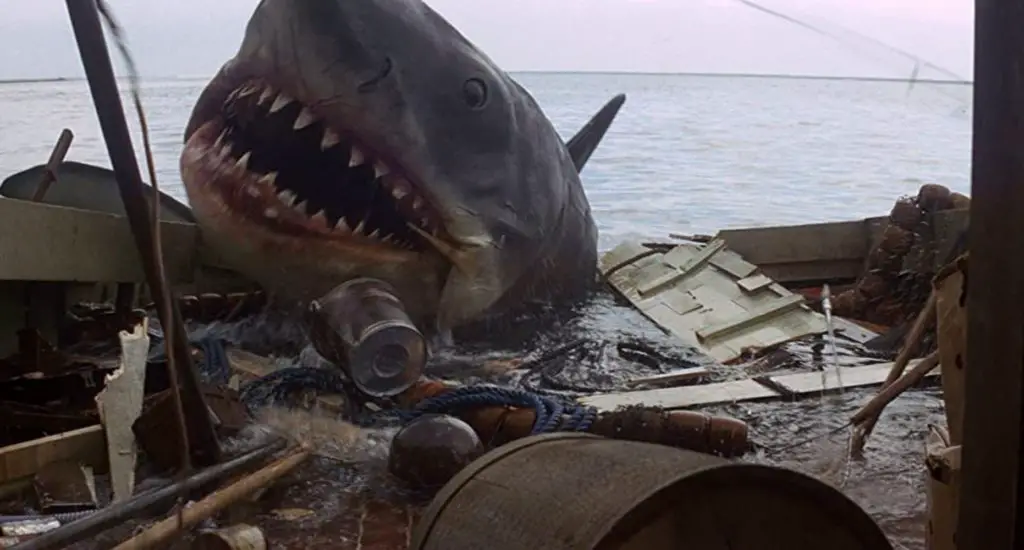
10. The Great White Masterpiece
Considering, the great white killer has only 4 minutes of screen time, Jaws (1975) is a classic example of how unforgettable horror movie music makes the entire film even more terrifying. The slow and steadily duuuunnnn duun… rises in volume to a rapid succession of heartstopping duuunnnnnnnn dun dun dun dun dun rising and falling, never knowing if and when the shark will strike. As a result, the overlaid sound of tubas creates what composer John Williams described as: “grinding away at you, just as a shark would do, instinctual, relentless, unstoppable.[1]”
As the opening credits roll, the camera swims through plankton, over rocks, through schools of fish. The full orchestra aggressively joins the lone tuba with the gnashing sounds of strings, harps, woodwinds, and brass to emulate the fear of the unknown swimming silently in the dark water below: a desperately hungry shark. Moreover, the Jaws theme stands as one of the scariest unforgettable horror film scores in history. It has kept people from going back into the water, sometimes, forever since it debuted in 1975!
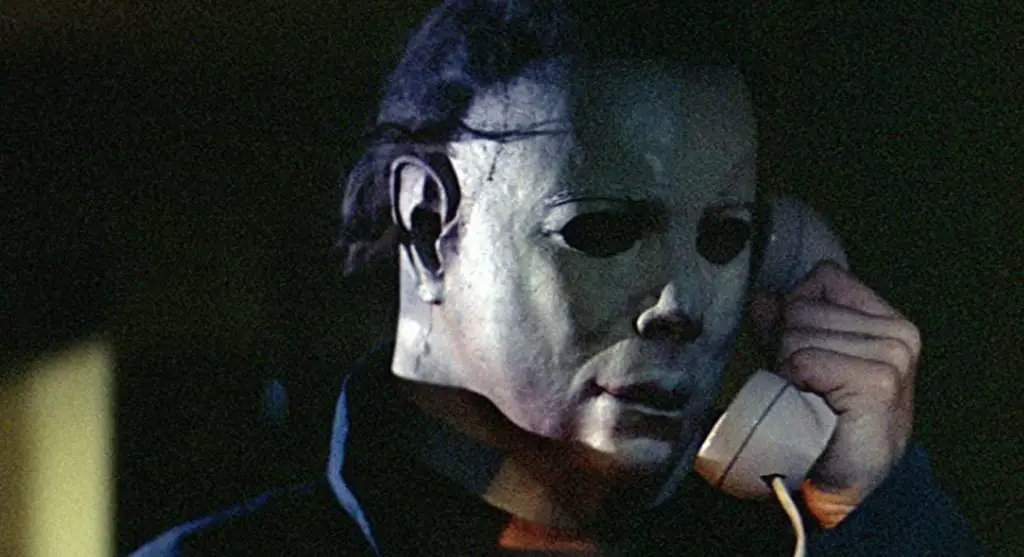
9. Over Budget? Make Your unforgettable Horror Movie Music!
Back in 1978, John Carpenter was a young, ambitious filmmaker. He had only two films under his belt when the soon-to-be blockbuster Halloween (1978) bowed in theaters, paving the way with its uber-infamous horror franchise. With a $300,000 budget and 20 days to film, the budget for the score was non-existent. But, the crafty Carpenter would go on to frame his slasher masterpiece with unforgettable music. Late 70s disco music was synth-heavy, so, no better time to make murderous synth music with what was filling the dancefloors.
The Halloween theme is simplistic and highly effective. It beats with a steady driving pulse in 5/4 time. Like the tick-tock of a clock, “the electronic percussive sound in ruthless sixteenth notes suggests Michael’s unrelenting drive to kill.[2]” The pace of the musical score is as iconic as it is frightening. Every time the Halloween film music plays, whether a gory moment or a jumpscare, the threat is imminent like the theme in Jaws. It is a musical horror score as important as the film itself.
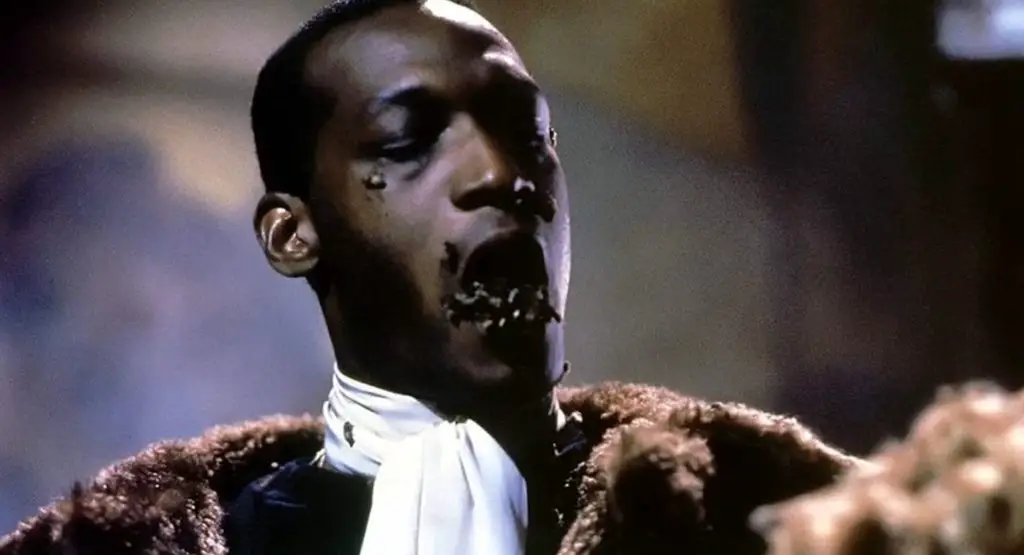
8. Unforgettable Horror Movie Music Worth Killing For
A surefire way to tug at the heartstrings while watching a film is to incorporate a beautiful melody of love. Case in point, Helen’s Theme, more aptly titled, Helen, it Was Always You, from the very underrated but very unique and timeless horror film Candyman (1992). Renowned composer Philipp Glass wrote the song about the haunted relationship between the son of a slave and a graduate student. The son’s wealthy father educated his son in the fine arts. When the daughter of a powerful man became pregnant by the son, her father hired some men to hunt him down.
They saw off his right hand, smeared him with honeycombs and angry bees, burned his body in a giant pyre, then spread the ashes on the Chicago housing project of Cabrini Green. Director Bernard Rose wanted Candyman to embrace social commentary. As such, the music for the film needed the complete sounds of an orchestra.
The aching “voice” of a many-layered organ and piano. Helen’s theme in Candyman (1992) creates a unique sound for the entire film and is responsible for the creation of Orange Mountain Music record company. Arguably, one of the essential horror love songs, something more of a lullaby, as we (Helen) accept the world’s injustices when we accept fate and are willing to die.
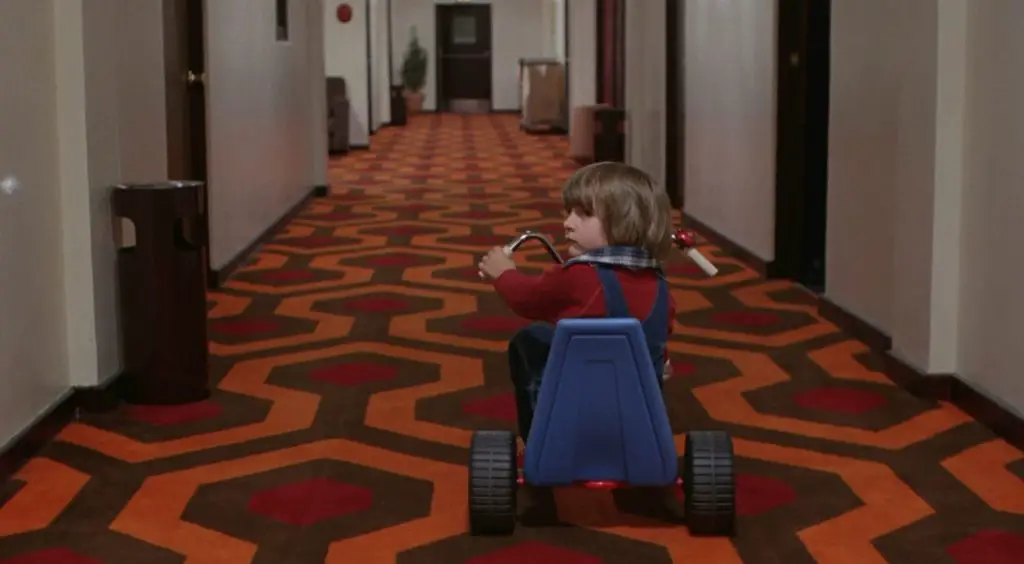
7. Bouncing Along in Your Murder Mobile!
The elegance with which composers and songwriters Wendy Carlos and Rachel Elkind effortlessly framed their musical score with the opening credits of The Shining (1980) is a match made in horror heaven. Nature’s relationship with today’s technology, reduced to drone footage, mashed up with potentially glossed-up CGI-created wilderness shots. The Shining opens with sweeping aerial footage reminiscent of a high-quality 4K National Geographic documentary. The camera glides effortlessly across a lake, resting its lens on a car, glinting in the waning sunlight, perched precariously, and moving eastbound on the edge of a wilderness highway.
This shot alone begs for a detailed narration by David Attenborough. What the two composers achieve are “cues heard in bone-melting organs and synths, a signature theme which bonds the rocky mountains to human existence with nauseating slices and swoops of electronic sound.[3]” The final shot, of course, is the family’s car pulling into the parking lot beneath the majestic snow-covered peaks flanking the Overlook Hotel, played by the real-life Timberline Lodge at Mt. Hood in Oregon.
The nails-to-chalkboard moaning of the chorale, out of tune and sounding in pain, brings the opening theme to a close but musters up an all-over hair-raising experience to set the tone for one of director Stanley Kubrick’s finest films. Even before we get a look at a single character in the film, the haunting score has already beaten Jack Nicholson to the punch with a musical version of “Here’s Johnny!”
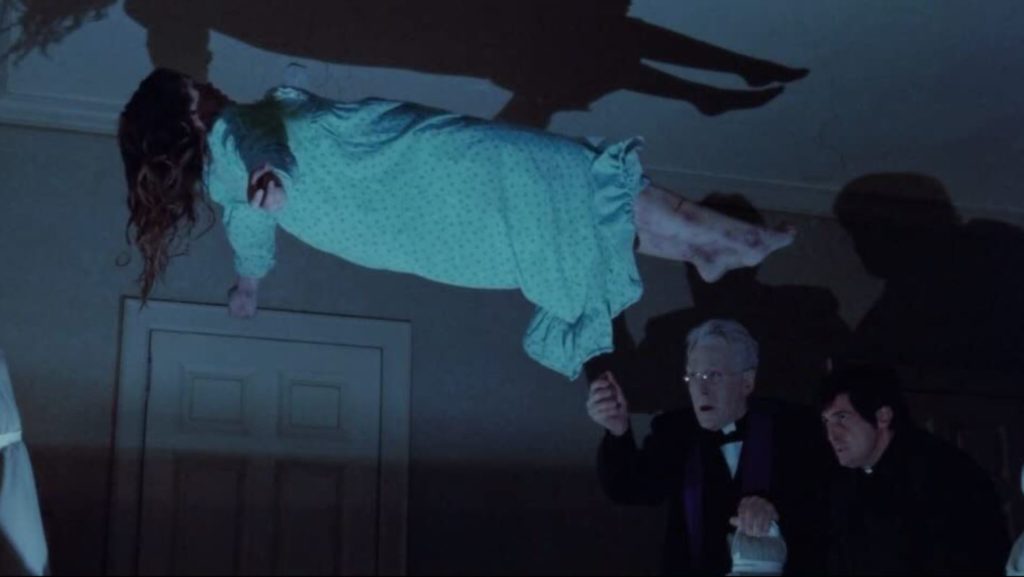
6. Dancing with the Devil
Serendipity may have a lot to do with how “the scariest movie,” ever; The Exorcist (1973) and the debut album by folk music aficionado Mike Oldfield got together. The theme song created movie music mayhem. After director William Friedkin abandoned the original musical score, he would haphazardly pick up an unlabelled album in the executive office of Atlantic records. With one blind listen to the title track, Friedkin knew Tubular Bells was the song the movie needed to take his film to the next level.
Some “theaters arranged for ambulances to be on call, and some theater patrons had to be helped to leave the places they had hidden between the seats.[4]” Up until the films’ release, Oldfield’s album had limited exposure and dismal sales. Paramount Studios’ film about a young girl possessed by a demon and her mother’s struggle to agree to a professional exorcism shocked and delighted many horror fans. It’s still one of the most celebrated and talked about horror films today.
In addition, the film’s musical score catapulted Oldfield into the folk music stratosphere. Not unlike Halloween’s theme, Tubular Bells is instantly recognizable. The film would go on to receive a whopping 10 Academy Award nominations. Oldfield’s album stayed in the top 10 for over a year, reaching number 2 on the Billboard 200 album chart and selling over 4 million records to date. All thanks to a film that has managed to remain in pole position and perpetually “do for the horror genre what 2001: A Space Odyssey did for science fiction.[5]”
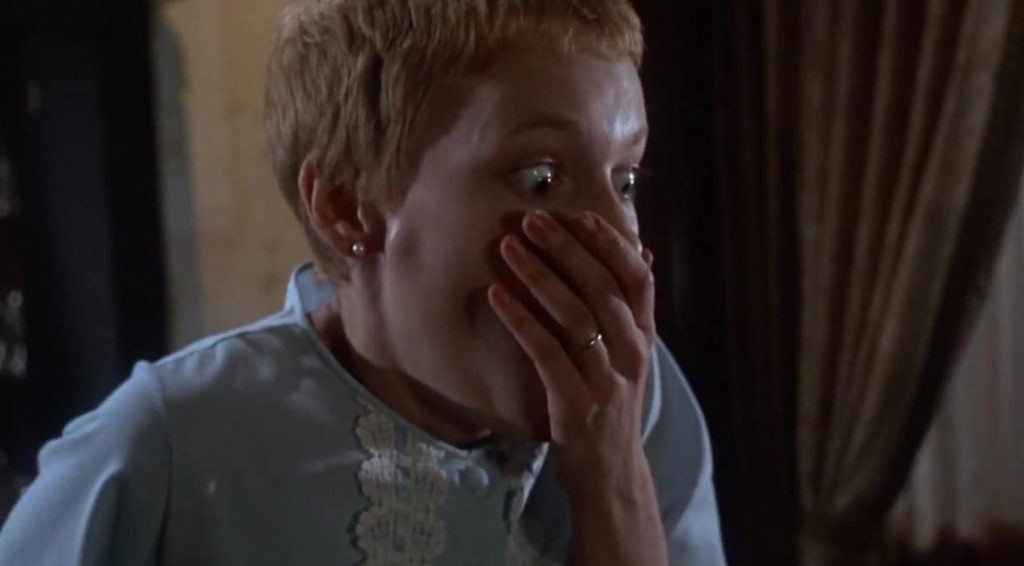
5. A Lullaby for the Baby on 1 West 72nd Street
Ever been snuggled in bed but kept awake by the gnawing sound of a slowly dripping faucet? At the onset of the opening credits of Rosemary’s Baby, the music is just that, a disturbing drip. Shards of sound, sharp-edged notes drip into melancholy lullaby floating across a long wide panoramic view of the island that is Manhattan. A woman begins singing along, an erratic string of “La la la,” somewhat out of tune; not too sure of the melody or how to blend her notes with the score. Then like a child simultaneously hammering down on the B6 and C7 piano keys a sharp, violent plinking sound joins the singing woman and the velvety lullaby. It is at once shocking and unexpectedly as beautiful as the curly pink font that introduces the actors and main crew in the opening titles.
The rhythm of the piano keys and the Ch ch ch sound effect in the Friday the 13th score are eerily similar. Composer Krzysztof Komeda wrote the Rosemary’s Baby theme, oddly titled Sleep Safe and Warm, of which nothing of the movie is. Online magazine Cultre.Pi states that “Komeda’s music is the factor which makes you hold your seat armrest tight from the very beginning of the film. From the opening scenes of Rosemary’s Baby (1968), there is so much skin-crawling tension and creeping chaos that even the young couple Woodhouses’ bright and well-lit apartment becomes scary.[6]”
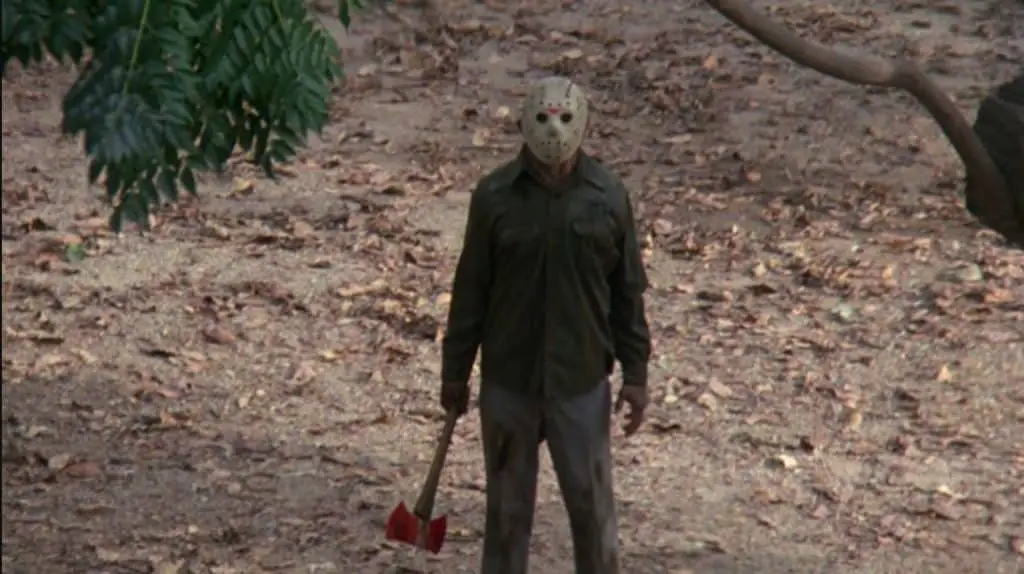
4. Unforgettable Horror Movie Music Around the Campfire
The full moon appears from behind a bank of dark clouds. Cut to a log cabin with a red door. The faint sound of camp counselors singing wafts over the chirping of crickets slicing through the still evening. Inside the cabin, a group of teenagers sits in a tight circle singing while a girl plays the guitar. Cut to the ‘Fox’ cabin. The door creaks open. Young campers asleep in their beds are unaware of the stranger that has entered.
At the 1:14 mark, a strange sound – chh chh chh – intermingles with the crickets outside and the slowly rising crescendo of violins. The stranger in the cabin observing the sleeping children is distracted by a flash of yellow; 2 camp counselors sneaking away from the rest of the group hide in a tool shed. Caught off guard, with their shorts down, the boy stands and innocently declares, “We weren’t doing anything.” He falls to the ground, stabbed and bleeding. An unexpected crescendo of violins tears through the silence. Chh chh chh! The frame freezes and the camera slowly moves towards the girl’s terrified face. Her gaping mouth is filled with blood-curdling screams.
Friday the 13th (1980) was made on a B-list budget and wasn’t expected to become the epitome of the Slasher genre. But it did. It would be responsible for evolving the blueprint for hundreds of slasher horror films and launching a billion-dollar franchise. The film’s soundtrack is notable simply for its ability to mimic the sound of people panicking in terror. The signature Chh chh chh sound effect, the soaring, biting strings of composer Harry Manfredini’s musical score, interspersed with some of the best jumpscares and one hell of a memorable opening, solidify Friday the 13th in the echelon of best horror movies with a killer soundtrack!
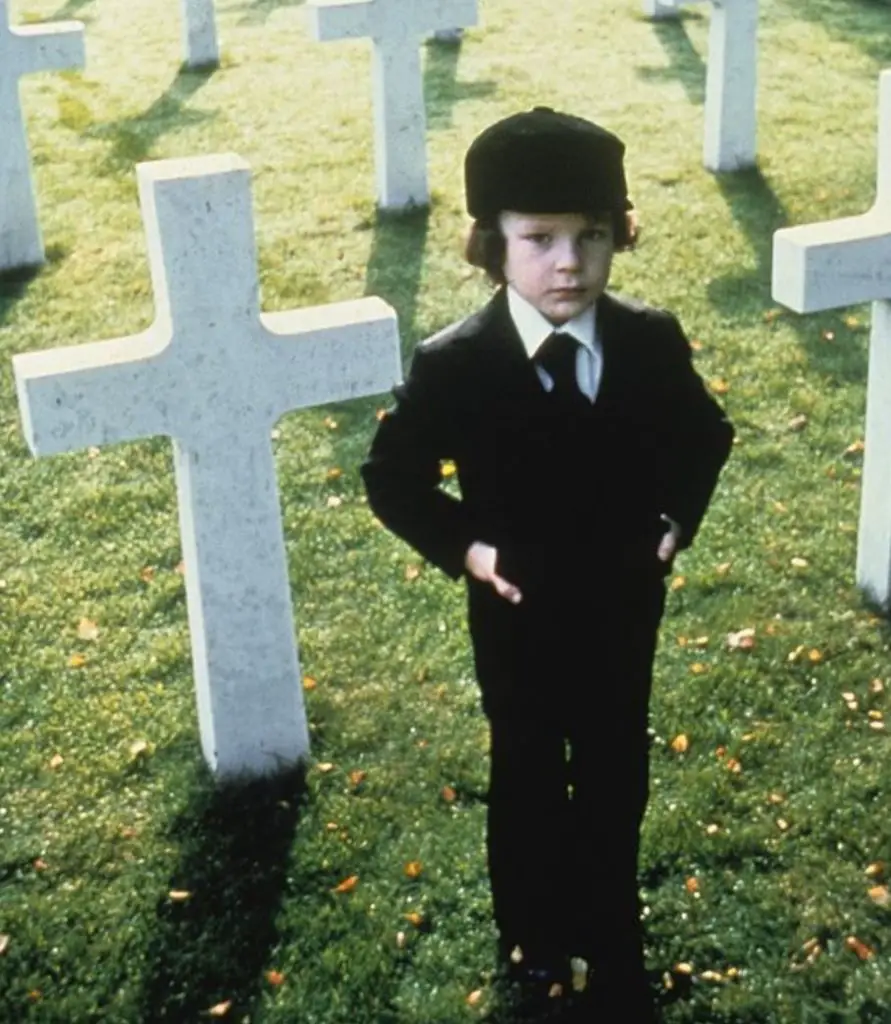
3. Chant a Song for Satan!
Some of the most famous choirs – Mormon Tabernacle, Trinity College, Wells Cathedral – don’t hold a candle to the power of composer Jerry Goldsmith’s choir singing “Hail Satan” (Avé Satani). The song is a Gregorian chant, written to honor the Dark Lord himself in The Omen (1976). The film tells the story of a child named Damien, who is switched at birth and is discovered to be the son of a jackal preparing for his “coming.” Learning that he is, in fact, the Antichrist, his adoptive father, must race against the clock to save his family and whoever gets in the path of learning Damien’s secret: possessing evil telepathic powers to gain a devoted flock to protect him from the forces of good.
Damien instills suicidal thoughts in his “enemies” (most of the Catholic church) or forces them to succumb to a grisly demise. The powerhouse choir Goldsmith assembled sings at the top of their lungs as if they are partaking in a conjuring. Their voices crack like thunder and permeate the film with terror. It makes every hair on the neck and arms stand up. When Avé Satani plays, timed perfectly with the creative kills, the intensity on the screen ratchets up ten notches. The decision to go large with an entire choral and symphony paid off. Avé Satani is one of the rare horror musical songs to be Academy Award-nominated for Best Original Song along with its full soundtrack for Best Original Score.
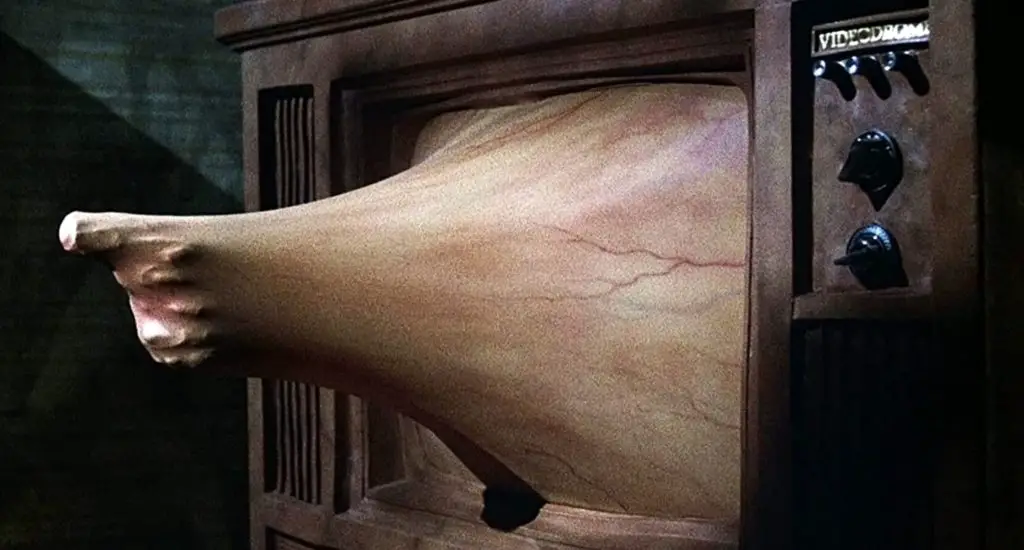
2. Mind-Control and the Unforgettable Horror Movie Music
Director David Cronenberg’s misunderstood body horror Videodrome (1983) is a stylish blend of mind-control, conspiracy and socio-political theories. The story follows a man named Max Wrenn, CEO of a small UHF television station. He discovers a secret broadcasted television signal and begins investigating its source. One night, while watching the channel, he is lured into the television. It turns out it causes people to lose touch with reality and uncontrollably hallucinate. Needless to say, Max’s life is never the same. A horror film boasting a juicy and unique storyline of this caliber deserves a bizarre and alluring soundtrack. Videodrome is filled with violence and psychosexual themes.
Playing throughout is the multi-layered sonic soundtrack. Videodrome’s score by composer Howard Shore is meant to mimic the characteristics of experiencing hallucinations. “The dramatic orchestral music increasingly incorporates, and eventually emphasizes, the sound of electronic instrumentation. The entire score, composed for a full orchestra, was programmed into a Synclavier II digital synthesizer. Next it the score was recorded being played in tandem with a small string section. The resulting sound was a subtle blend that makes it difficult to tell which sounds were authentic synthesized[7]
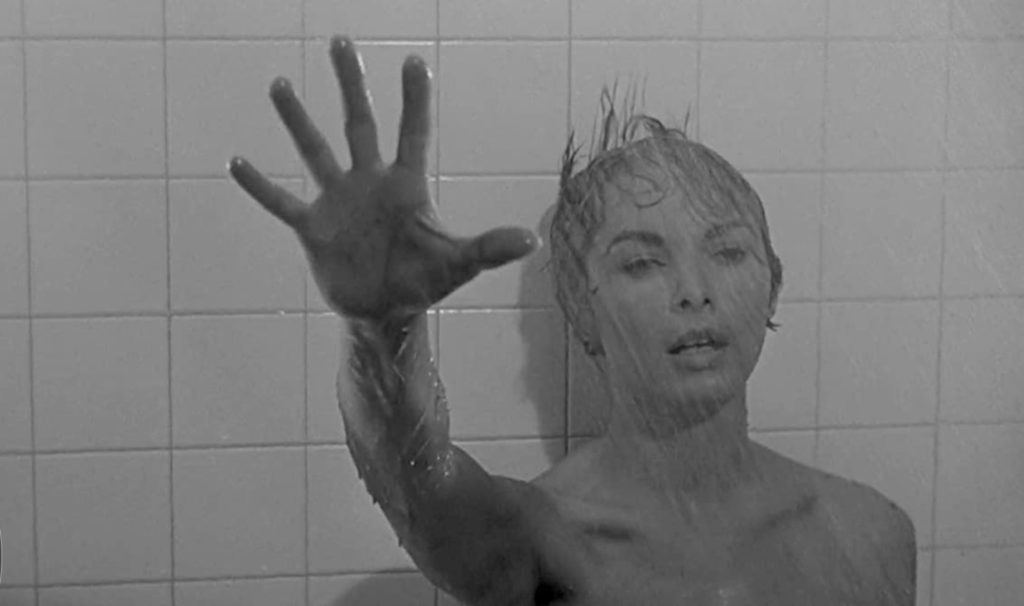
1. Do You Sing in the Shower?
After Alfred Hitchcock’s horror-thriller classic Psycho (1960) premiere, taking a shower became almost obsolete. For the frightening shower scene, seventy-eight individual pieces of film, edited down to 45 seconds, became one of the most iconic horror scenes in film history. Placed within the moving images is Bernard Herrmann’s heart-pounding anxiety-inducing music. As a woman takes a shower, the bathroom door opens.
A shadowy figure, seen in silhouette behind an opaque shower curtain, steps forward. Simultaneously, as the curtain rips back, revealing a person; face shadowed against the lone lightbulb in the bathroom ceiling, the screeching music begins playing. The killer, gray hair pulled back into a chignon, dressed in a flower-printed dress, raises a butcher knife. The woman turns and screams as the knife plunges 8, 10, 12 times. Herrmann used only violins to create jarring, screeching sounds synced with the stabbings.
Actress Janet Leigh played the titular character, and shower taker, Marion Crane. After filming she only took baths for the rest of her life. According to Salon.com, “One angry father wrote to Hitchcock. His daughter refused to bathe after seeing a bathtub drowning in the French film Les Diaboliques. Six years later, she refused to shower after seeing Janet Leigh’s character slashed to death in Psycho. Hitchcock responded, “Send her to the dry cleaners.[8]”
So, was it the Movie or the Music?
When terrifying unforgettable horror movie music horror music plays, something interesting happens to the brain: dissonance, the repeated inconsistency between the beliefs one holds. During the shower scene, the brain “unconsciously desires harmonic resolution,” meaning it wants more pleasant sounds to compensate Marion’s untimely murder violently flashing before them. Herrmann’s iconic stabby “Murder” cue for the film’s infamous shower scene is a perfect example of the power of sonic capabilities of dissonance when used as a soundtrack in a horror film.
Thanks to the brilliance of the musical composers! They possess a palpable connection to feel the terror while writing a score for a horror film. They possess the unique ability to connect with a particular character and change the mood with a single note. Particularly with the addition or removal of specific instruments. To spark a reaction of fear, make the audience sit up on the edge of their seats, sonically slash through the speaker, and audibly insight fear throughout the darkened theater. So, the only question is: what is scarier, the movie or the music? Watch and learn!
[1] “John Williams ‘Theme to Jaws’: Be Careful in the Water….” 6 Mar. 2020, https://classicalexburns.com/2020/03/06/john-williams-theme-to-jaws-be-careful-in-the-water/. Accessed 25 Oct. 2021.
[3] “The 13 scariest horror film soundtracks ever written – Classic FM.” 27 Oct. 2020, https://www.classicfm.com/discover-music/periods-genres/film-tv/scariest-horror-soundtracks-music-scores/. Accessed 25 Oct. 2021.
[4] Kermode, Mark (2008). The Exorcist. BFI Modern Classics. British Film Institute. ISBN 978-0-85170-967-3
[5] Paul, William (1994). Laughing Screaming: Modern Hollywood Horror and Comedy. Columbia University Press. pp. 288–92. ISBN 9780231084642
[6] “Rosemary’s Baby: The Devil Was Not Only in the Details – Culture.pl.” 26 Mar. 2015, https://culture.pl/en/article/rosemarys-baby-the-devil-was-not-only-in-the-details. Accessed 25 Oct. 2021.
[7] Lucas, Tim (2008). Studies in the Horror Film – Videodrome. Lakewood, CO: Centipede Press. p. 133. ISBN 978-1-933618-28-9.
[8] “The secrets of “Psycho’s” shower scene | Salon.com.” 26 Jun. 2010, https://www.salon.com/2010/06/26/psycho_shower_scene_anniversary/. Accessed 25 Oct. 2021.
